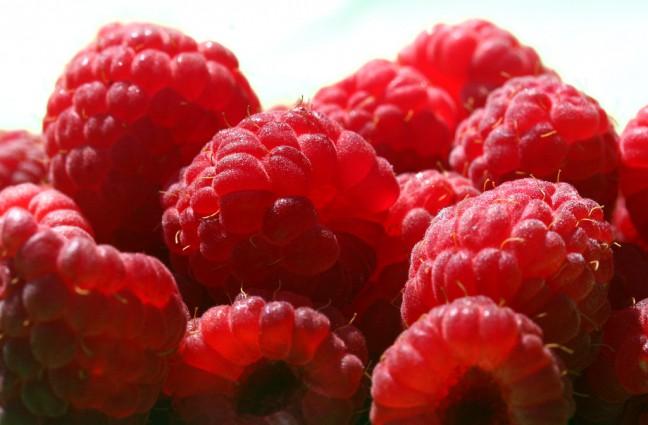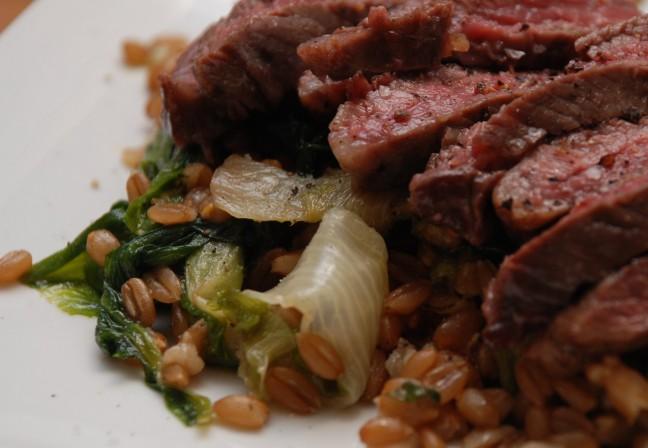We know they’re good for us, and we know we need to eat more of them, but how many of us actually get enough fruits and vegetables in our diet? The answer: not many.
According to the 2010 Dietary Guidelines for Americans, an individual following a 2,000-calorie diet should be eating two cups of fruits and two-and-a-half cups of vegetables a day. Even more recently, a study at the University College London found that eating seven or more portions of fruits and vegetables daily reduces your risk of death, compared to less than one serving a day. Yet, in reality, very few of us actually come close to meeting these recommendations. The most recent data from the Centers for Disease Control shows that less than 25 percent of Americans consume five or more servings daily. Something has to change.
A diet rich in fruits and vegetables provides essential vitamins and minerals, antioxidants, fiber and also reduces the risk of cancer, cardiovascular disease, stroke and several other medical complications. So how do we get ourselves to eat more? Read on to learn how easy it can be.
Buying
If you’re looking to eat healthy without busting the bank, there are a few things you should know. First, it’s best to shop in season. Not only are prices more affordable, but you’ll also find higher quality produce.
Second, buying organic is not the end-all, be-all. There are mixed results when it comes to what is healthier, but either way, a bag of conventional apples is better than no apples at all. If you prefer organic but can’t always justify the cost, splurge on the “dirty dozen,” which is a list of foods with the highest pesticide residues put together by the Environmental Working Group. The dirty dozen are apples, strawberries, grapes, celery, peaches, spinach, sweet bell peppers, nectarines, cucumbers, potatoes, cherry tomatoes and hot peppers.
Another way to save some green is to take advantage of local farmer’s markets, where you can take your pick of fresh produce and support area vendors, who are often certified organic. Between the Saturday market on Capitol square and the Wednesday market on Martin Luther King, Jr. Boulevard, it’s hard finding an excuse not to go. To get a wide variety and introduce yourself to new fruits and veggies, make it a goal to pick one new item each week or two — you can test your taste buds while challenging your kitchen skills!
Whether you buy organic or not, it’s always important to wash produce before preparing and consuming, even if you plan on peeling it. Knives can transfer dirt and bacteria and contaminate the edible portion. Thoroughly wash produce under running water before use, no soap or special produce wash needed.
Preparing
Just like it’s important to find time to study and work out, it’s important to make it a habit of finding time to prepare healthy foods for long-term health. Set aside an hour or two on your least busy day to wash, peel and chop produce for snacks and meals throughout the week. Some quick picks include bell peppers, cucumbers and strawberries.
If you’re really short on time and can spare a few extra dollars, buy pre-prepped items like baby carrots, bagged lettuce and pre-cut fruit. Don’t be afraid to include frozen and canned fruits and vegetables either. These options are convenient and still offer adequate nutrition.
Incorporating
If keeping track of serving sizes sounds like too much of a hassle, keep it simple and aim to make half of your meals consist of fruits and vegetables. At breakfast, scramble up some eggs with mushrooms and peppers or whip up a smoothie packed with berries and spinach.
For quick snacks and lunches on the go, apples, bananas, grapes, carrot sticks, sliced peppers and snap peas are all great options. If raw veggies aren’t your thing, pair them with salsa, guacamole, a yogurt-based dip, or choose from one of the many available flavors of hummus — roasted red pepper, spicy chipotle or zesty garlic, to name a few.
Dinnertime presents an array of opportunities to sneak in extra servings. Sauté your favorite vegetables and toss with pasta in a light garlic and olive oil sauce. Cook up a quick stir-fry with mixed frozen vegetables and a salad on the side.
Even desserts can be healthy. If a piece of fruit doesn’t cut your craving, there are plenty of sweet treats to hide vegetables in. Recipes like chocolate cake with beets, sweet potato brownies or this week’s carrot apple nut muffins provide an extra dose of vitamins, minerals and fiber, all while satisfying your sweet tooth.
With a little time and some creativity, you’ll be getting your five (or seven) a day in no time.
Carrot Apple Nut Muffins
This recipe provides a quick and delicious breakfast option perfect for students on the go. Not only do the carrots and applesauce deliver essential vitamins and minerals, the whole wheat flour provides fiber while the walnuts give an added boost of protein and heart-healthy fats. If you don’t have time to grate whole carrots, buy a bag of shredded carrots, which are typically found near the salad mixes.
Ingredients
- 1 ½ cups whole-wheat flour
- 1 teaspoon baking soda
- 1 teaspoon cinnamon
- ¼ teaspoon nutmeg
- ¼ teaspoon ginger
- ½ teaspoon salt
- ½ cup butter, softened
- ½ cup honey
- 1 egg
- 1 teaspoon vanilla extract
- 1 cup unsweetened applesauce
- 1 cup shredded carrot
- ½ cup chopped walnuts (optional)
Directions
Preheat oven to 350 degrees. Line the muffin tin or use non-stick cooking spray and set aside.
In a medium bowl, combine the flour, baking soda, spices and salt.
In a large bowl, mix together the butter, honey, egg and vanilla. Once completely mixed, slowly add in the dry ingredients, just until combined.
Finally, fold in the applesauce, carrots and walnuts (if desired). Divide the batter between liners and bake for 18-20 minutes. Test by inserting a toothpick in the center of a muffin. If it comes out clean, the muffins are done.
Cool completely. Store in an airtight container or in the freezer in a freezer-safe container.
Makes 12 muffins.




















